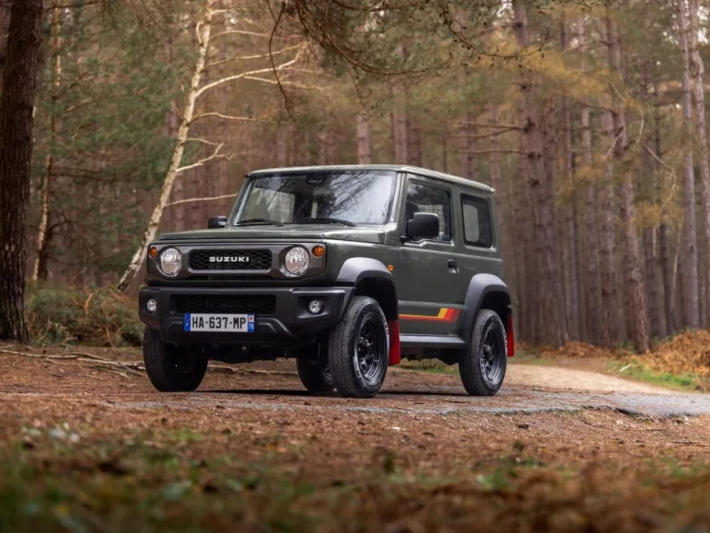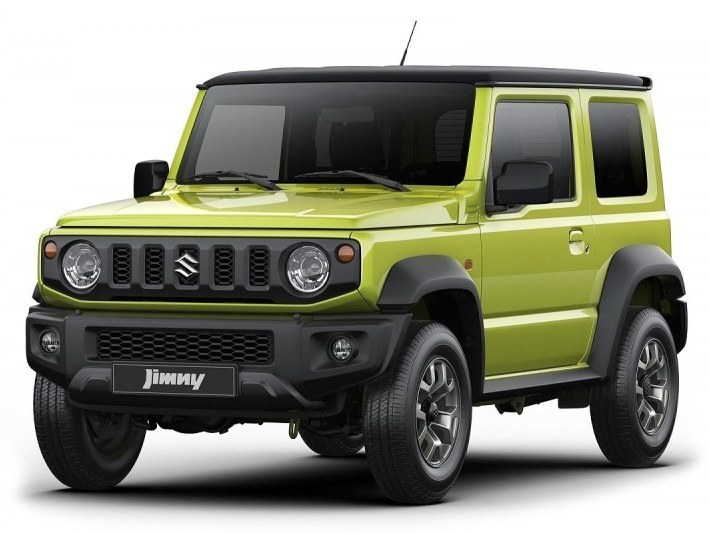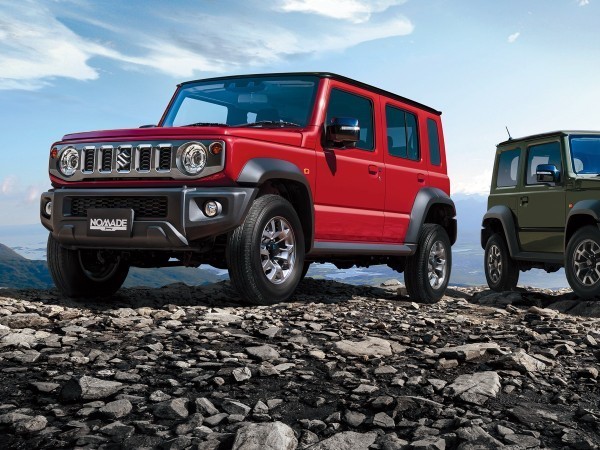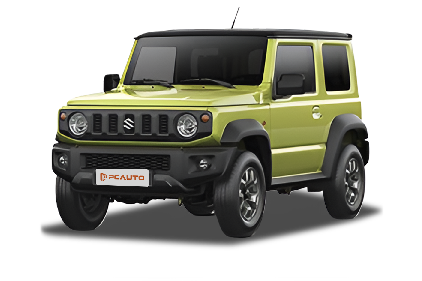Q
where is the starter motor on a suzuki jimny
The Toyota Corolla Cross is a compact SUV built on the Corolla sedan's platform. Since hitting the scene in 2020, it's quickly become a hot pick in Malaysia, slotting neatly between the Corolla Altis and RAV4. It blends the car-like handling you'd expect from a Corolla with the practicality that makes SUVs so popular.
In Malaysia, you can get the Corolla Cross with either a 1.8L naturally aspirated petrol engine or a 1.8L hybrid setup. The hybrid is the one to watch if fuel efficiency is your thing – thanks to VVT-iE tech and electric motor assistance, it sips fuel at a claimed 4.3L/100km.
Size-wise, it's 4460mm long, 1825mm wide, and 1620mm tall, with a 2640mm wheelbase. That translates to decent legroom in the back and a 487L boot, which should handle most family outings without breaking a sweat.
Kit-wise, Malaysian specs come standard with Toyota Safety Sense – that's the suite with pre-collision warning, lane keeping assist, and the like. You also get a 7-inch instrument cluster and a 9-inch infotainment screen that plays nice with Apple CarPlay and Android Auto. Step up to higher trims, and you'll unlock extras like a power tailgate and a 360-degree camera.
What really sets the Corolla Cross apart from rivals like the Honda HR-V or Mazda CX-30? Toyota's strong reputation for retained value and a wide service network in Malaysia are big pluses. Plus, that hybrid system has been tried and tested in models like the Prius for years, so you know it's reliable.
Keep an eye out too – some markets got a mild facelift in 2023, with subtle styling tweaks and an upgraded TSS 3.0 system. Malaysian folks should check in with UMW Toyota for the latest on when (or if) those updates land locally.
Special Disclaimer: This content is published by users and does not represent the views or position of PCauto.
Related Q&A
Q
What engine is in the 2024 Suzuki Jimny?
The 2024 Suzuki Jimny continues to be powered by the well-regarded 1.5-liter K15B naturally aspirated four-cylinder gasoline engine. This powerplant features a lightweight aluminum block, delivering 102 horsepower and 130 Nm of peak torque. It's mated to either a 5-speed manual or 4-speed automatic transmission, and comes standard with a part-time 4WD system with low-range gearing, making it suitable for both city commuting and light off-roading. Known for its durability and low maintenance costs, the engine pairs with the Jimny's classic ladder frame and body-on-frame construction, balancing handling stability and terrain capability. What's notable is that despite its small displacement, the short wheelbase and generous ground clearance make it nimble in tight city streets or rough terrain, while the addition of an electronic limited-slip differential further enhances its ability to get out of tricky spots. For those prioritizing fuel efficiency, keeping an eye on the official maintenance recommendations—like using low-viscosity engine oil or maintaining proper tire pressure—can help optimize real-world fuel economy. While there's no hybrid option yet, this powertrain has been market-tested for years and is particularly well-suited to our region's varied driving conditions.
Q
Is the 2024 Suzuki Jimny a good off-road vehicle?
The 2024 Suzuki Jimny is really a great fit for off-roading. It carries on the Jimny lineup's classic rugged design, with a tough body-on-frame construction, paired with a part-time 4WD system and electronic limited-slip differential, making it a breeze to tackle tricky terrains like mud and sand. Its short wheelbase and good ground clearance also boost its off-road capability. The 1.5-liter naturally aspirated engine might not be the most powerful, but it delivers steady low-end torque, perfect for slow off-road crawling, and it's pretty fuel-efficient too. The interior is simple and functional – the manual handbrake and physical buttons are more direct and reliable when you're out on the trails. To expand a bit, if you're into light to moderate off-roading often, the Jimny's size and agility make it shine on narrow mountain roads or jungle tracks. But if you need to do a lot of highway driving or haul cargo, the space and comfort can feel a bit lacking. Maintenance costs are relatively affordable too, with plenty of parts available, which is good for folks who love outdoor adventures but don't want to spend a fortune. All in all, the 2024 Jimny keeps its traditional strengths in off-road performance and stands as a solid value in entry-level off-roaders.
Q
What engine is in the Jimny 2024?
The 2024 Jimny still packs a 1.5-liter K15B naturally aspirated four-cylinder gasoline engine, cranking out 102 horsepower and 130 Nm of peak torque. It's mated to either a 5-speed manual or 4-speed automatic gearbox. This powertrain is known for its durability and low maintenance costs, making it a solid fit for city commutes and light off-roading. While the power figures aren't exactly head-turning, the Jimny shines off-road thanks to its lightweight body and ladder frame construction. The part-time 4WD system with low-range gearing to multiply torque handles mud, gravel, and other tricky terrains with ease. One thing to note: this engine uses multi-point fuel injection instead of direct injection. Yeah, it's a bit behind the curve on fuel efficiency compared to the latest tech, but it's way more forgiving with lower-quality fuel, which is a big plus in areas where gas station infrastructure is hit-or-miss. If you're craving more power, the turbocharged versions available in some overseas markets might pique your interest, but don't hold your breath for them here anytime soon—emission regulations are probably going to keep them out. For daily use, I'd recommend keeping an eye on your spark plugs and throttle body. With these small-displacement naturally aspirated engines, keeping the intake system clean is key for maintenance.
Q
How much is the Jimny 2024?
The latest prices for the 2024 Jimny range from approximately 150,000 to 180,000 Ringgit, depending on the trim level and configuration. Exact pricing may vary due to dealer promotions or optional accessories. This model retains the iconic boxy design and robust off-road capabilities, powered by a 1.5L naturally aspirated engine paired with a 4AT transmission, and features the ALLGRIP PRO part-time 4WD system—perfect for outdoor adventure enthusiasts. Notably, the 2024 version has been refined for better sound insulation and suspension comfort while keeping hardcore elements like the ladder frame chassis and three-link rigid axle suspension. As a compact off-roader, it offers great modification potential; local owners often add off-road tires or roof racks. Before purchasing, it’s advisable to test drive at an authorized showroom to experience its unique driving feel and inquire about after-sales warranty policies, which typically cover 5 years or 100,000 kilometers. Fuel economy is moderate, averaging around 12-14L/100km in urban driving, but increases significantly in off-road conditions.
Q
Is Jimny good for city driving?
As a compact SUV, the Suzuki Jimny holds its own pretty well for city driving in Malaysia. That 3.7-meter short body is a total lifesaver for squeezing through tight lanes and nailing those tricky parking spots in congested cities like KL. The 1.5L naturally aspirated engine paired with the 4AT gearbox isn't going to win any drag races, but it's got enough low-end torque to handle stop-and-go city traffic without breaking a sweat – though you will notice it drinks a tiny bit more fuel than your average urban SUV.
Let's talk ride quality: the Jimny's body-on-frame construction and solid axle suspension can feel a bit jiggly on smooth tarmac, but that generous ground clearance? It laughs at Malaysia's potholed roads and those annoying temporary roadblocks you find everywhere. A heads-up though – the back seat is pretty snug. It's perfect for 1-2 people commuting daily, but if you're regularly ferrying around a full crew, comfort might take a hit.
Here's where the Jimny really shines, though – off-road capability, which is a huge plus for adventure-loving owners. Weekends up to places like Cameron Highlands or Fraser's Hill? This little rig handles those mountain roads like a champ. Over in the Malaysian market, Jimnys hold their value surprisingly well, and servicing is generally straightforward – just be prepared that original parts can be a touch pricier than your run-of-the-mill city cars.
Q
Does Jimny have resale value?
In the Malaysian market, the Suzuki Jimny actually maintains a relatively high resale value as a used car, which is primarily attributed to its unique design, solid off - road capabilities, and relatively limited supply. As a compact, hardcore off - roader, it has no direct local competitors. Plus, with that classic boxy shape and impressive go - anywhere ability, it has a large fan base among off - road enthusiasts and buyers looking for something with personality—so demand for used ones stays steady. The high prices of new cars and long waiting periods also indirectly support the resale values of second - hand vehicles.
Based on actual market data, a 3 - year - old Jimny typically retains about 65% to 75% of its original price, which outperforms city SUVs in the same price bracket. It's worth noting, however, that the actual resale value is influenced by the vehicle's condition, mileage, and any modifications made. Unmodified models with complete factory service records are undoubtedly more in demand in the used car market.
When Malaysian consumers purchase a niche vehicle like this, in addition to considering the resale value, they should also take into account their actual usage scenarios. The on - road comfort and interior space of the Jimny cannot compare with those of mainstream SUVs, however, its off - road capability is second to none among niche vehicles. This unique positioning is precisely what enables it to maintain its value so effectively.
Q
Where is Jimny built?
The Suzuki Jimny is currently rolling off the production lines at Suzuki's Hamamatsu plant in Japan, and this classic compact off-roader has built a global fanbase – Malaysia included – thanks to its tough-as-nails body-on-frame construction and impressive go-anywhere capabilities. Underpinning that rugged character is a ladder frame chassis paired with a part-time 4WD system, making it a solid fit for Malaysia's diverse landscapes. Whether you're navigating city streets or tackling weekend adventures, the Jimny handles it all with ease.
What really stands out, though, is how this little SUV punches above its weight when the going gets rough. Its generous ground clearance and short wheelbase translate to exceptional off-road articulation, which is a big reason it's a hit for tackling Malaysia's rainforests and rural tracks. For Malaysian buyers, the Jimny's appeal goes beyond just off-road prowess. Its relatively affordable price tag and low running costs are major draws, and when you factor in Suzuki's well-established after-sales network locally, it becomes the perfect pick for folks who want genuine off-road fun without breaking the bank. And in recent years, as Malaysian buyers have shown a growing appetite for more individualistic rides, the Jimny's retro-cool looks and massive potential for customization have only added to its popularity, especially among younger drivers.
Q
Are Jimny Motors reliable?
The Suzuki Jimny has built a solid fan base among Malaysian drivers, thanks to its tough, no-nonsense design and impressive off-road capabilities – it’s especially well-suited for the country’s varied terrain. This little SUV packs a 1.5L naturally aspirated engine that delivers smooth power while keeping fuel costs in check, and with relatively low maintenance expenses, it’s a smart pick for budget-conscious buyers. When it comes to reliability, the Jimny has a proven track record; its chassis and mechanicals have stood the test of time with minimal issues. That said, its lightweight body does mean some wind noise at highway speeds, and the interior leans more toward practicality than luxury – though for folks who prioritize function over frills, that’s hardly a dealbreaker. The Jimny also holds its value well in Malaysia’s used car market, which speaks volumes about its dependability. If you’re frequently tackling rural roads or light off-roading, the Jimny is definitely worth a look – just remember to keep up with regular servicing to keep it running strong for years to come.
Q
Why is Jimny famous?
The Jimny is renowned for its unique rugged off - road design, reliable performance, and compact, nimble body – traits that make it stand out in Malaysia's varied terrain. As a Suzuki classic, it features a body - on - frame construction, a part - time four - wheel - drive system, and ample ground clearance, enabling it to handle mud, gravel, and even light climbing trails with ease. No wonder it's a hit among off - road enthusiasts and outdoor adventurers.
Then there's its compact size, which is perfect for Malaysia's tight city streets and rural backroads. Coupled with decent fuel efficiency, it achieves a good balance between daily commuting and weekend adventures. In recent years, the Jimny's retro boxy looks have also attracted the attention of fashion - conscious individuals, making it a popular choice for customization and modifications.
Furthermore, its strong resale value in the used car market – a testament to its solid reputation and durability. For Malaysian buyers, the Jimny isn't just a practical off - roader; it's a lifestyle symbol, ideal for drivers who crave freedom and adventure.
Q
Why was Jimny discontinued?
So, why did the Jimny get the axe in Malaysia? Let's break it down. The main culprit is the ever-tightening global emissions regulations, especially the Euro 6 standards. The third-gen Jimny (JB74) with its 1.5L engine just couldn't keep up with the latest green demands, and Suzuki hasn't rolled out a compliant upgrade specifically for Southeast Asia yet.
On top of that, the Malaysian government's recent tweaks to import duties and certification processes have jacked up the cost of bringing in small off-roaders, chipping away at the Jimny's competitiveness. Don't get me wrong, the Jimny's a total legend among off-road enthusiasts – that short wheelbase and body-on-frame setup are pure off-road DNA. But let's be real, those same traits make it a bit of a handful for daily city driving and not the most fuel-sipper out there.
Now, the fourth-gen Jimny is out in some markets with the necessary updates to meet new rules. But here's the thing: Malaysians are pretty price-sensitive, and the SUV segment is fiercely competitive. So Suzuki's probably hitting pause on bringing it in for now.
If you're a Malaysian off-road fan craving something small but capable, don't despair. Keep an eye on alternatives like the new Toyota Land Cruiser or Mitsubishi Pajero Sport. They've both got the off-road chops and are fully compliant with local regulations.
Popular Cars
Model Year
Car Compare
Car Photo
Latest Q&A
Q
Why is gasoline a fuel?
Gasoline can serve as a fuel because it possesses core properties suitable for providing power and the ability to convert energy. It is a hydrocarbon mixture obtained through fractional distillation and cracking of petroleum, mainly containing C5-C12 aliphatic hydrocarbons, naphthenes, and a small amount of aromatic hydrocarbons. It is characterized by volatility and flammability, with low viscosity facilitating smooth flow in injection systems, and rapid evaporation enabling quick formation of a uniform combustible mixture with air. Gasoline stores chemical energy; when ignited by a spark plug in the engine combustion chamber, it burns rapidly to release a large amount of thermal energy, which pushes the piston to move and converts into mechanical energy, providing power for vehicles such as cars and motorcycles. In addition, the anti-knock property of gasoline (measured by octane number) can adapt to engines with different compression ratios, ensuring stable operation and performance; it has a high energy density, storing more energy per unit volume, good combustion efficiency, and high availability of gas stations for convenient use. Therefore, it has become the main fuel for spark-ignition internal combustion engines and is widely used in transportation and related fields.
Q
What are 1st, 2nd, and 3rd family gases?
The first, second, and third family cars are vehicle categories classified based on the stages of family car-purchasing needs. The first family car is an entry-level economical model, such as the Perodua Axia and Proton Saga, priced at approximately 30,000 to 50,000 Malaysian ringgit. It emphasizes fuel efficiency and practicality, making it suitable for young families purchasing a car for the first time. The second family car falls into the mid-range category, offering more space and enhanced features, such as the Proton Persona and Toyota Vios, priced between 60,000 and 100,000 Malaysian ringgit, catering to the comfort requirements of growing families. The third family car is a premium model or an MPV/SUV, such as the Proton Exora and Honda CR-V, priced above 100,000 Malaysian ringgit. It boasts spacious interiors and upscale configurations, ideal for larger families or long-distance travel. Malaysian consumers typically prioritize fuel efficiency, maintenance costs, and space when selecting a vehicle. Families at different life stages adjust their car choices accordingly. For instance, small families may begin with the first category, upgrade to the second after having children, and larger families often opt for the third category.
Q
What are the four types of natural gas?
Natural gas can be classified into four main types based on its source: gas field gas (pure natural gas), associated petroleum gas, condensate field gas, and coalbed methane. Gas field gas is directly extracted from gas wells, typically containing over 90% methane with minimal impurities. Associated petroleum gas is a byproduct of oil extraction, containing not only methane but also significant amounts of other hydrocarbons such as ethane and propane. Condensate field gas yields light hydrocarbon fractions during extraction, characterized by a high methane content and small quantities of heavier hydrocarbons like pentane. Coalbed methane is extracted from underground coal seams, primarily consisting of methane and nitrogen, and must have a methane content exceeding 40% to be utilized as fuel. Due to compositional differences, these natural gas types vary in calorific value and applications. The first three are commonly used for urban gas supply, whereas coalbed methane requires purification before effective utilization. As a clean and efficient energy source, the development and utilization of these diverse natural gas types play a crucial role in optimizing energy structure.
Q
What are the three types of fuel gas?
Common fuel gases are mainly divided into three types: natural gas, liquefied petroleum gas (LPG), and manufactured gas. Natural gas is a flammable gas existing in nature, with methane as its main component. It is colorless and odorless, leaves no residue after combustion, and has high thermal efficiency, making it a clean energy source. Liquefied petroleum gas is a by-product of the petroleum refining process, whose main components include propane and butane. It is a gas at room temperature but can be converted into liquid through pressurization and cooling, facilitating storage and transportation. Manufactured gas is generated through thermochemical reactions of fossil fuels such as coal or petroleum under specific conditions, with main components including hydrogen, carbon monoxide, and methane. It has low production costs but produces certain pollution after combustion, so ventilation should be ensured during use. These three fuel gases have different application scenarios in the energy supply field, and their calorific values and usage characteristics also vary. For example, the calorific value of natural gas is approximately 33,000-36,000 kcal per cubic meter, that of LPG is about 90,000 kcal per kilogram, and that of manufactured gas is roughly 3,500-4,200 kcal per cubic meter. The different calorific values make them suitable for different energy demand scenarios such as households and industries.
Q
Is unleaded petrol a gas?
Unleaded gasoline is not a gas but a liquid fuel. It refers to gasoline with a lead content of less than 0.013 grams per liter and without the addition of tetraethyl lead as an anti-knock additive during the refining process. Its octane rating is typically 95, slightly lower than the 97 of leaded gasoline. The use of unleaded gasoline can effectively reduce emissions of harmful substances such as hydrocarbons, carbon monoxide, and nitrogen oxides in vehicle exhaust, thereby lowering pollution risks including smog, toxic gases, and acid rain. However, it should be noted that while unleaded gasoline contains no artificially added lead, it still retains trace amounts of lead from crude oil. Additionally, its combustion releases gases, particulate matter, and condensates, with particles smaller than 2 microns in diameter being particularly prone to prolonged suspension in the air and subsequent human inhalation. Thus, potential health impacts remain a concern. Currently, most vehicles can use unleaded gasoline directly, though certain models require selecting the appropriate octane grade as recommended by the manufacturer to ensure optimal engine performance and longevity.
View MoreRelated News

How to improve the power of Suzuki Jimny?
AshleyNov 27, 2025

Only 55! Limited-Edition Jimny Coming to France
MichaelJun 20, 2025

Suzuki Jimny's Trusted 4WD System: Unleash Off-Road Thrills
Kevin WongMay 13, 2025

Jimny Nomade Japan released, over 50,000 orders in 4 days, consumers need to wait for 3.5 years
MichaelFeb 5, 2025

Suzuki Jimny Arctic Launch: Limited Time Offer to Save 7000 Ringgit!
Kevin WongNov 18, 2024
View More


















Pros
Cons